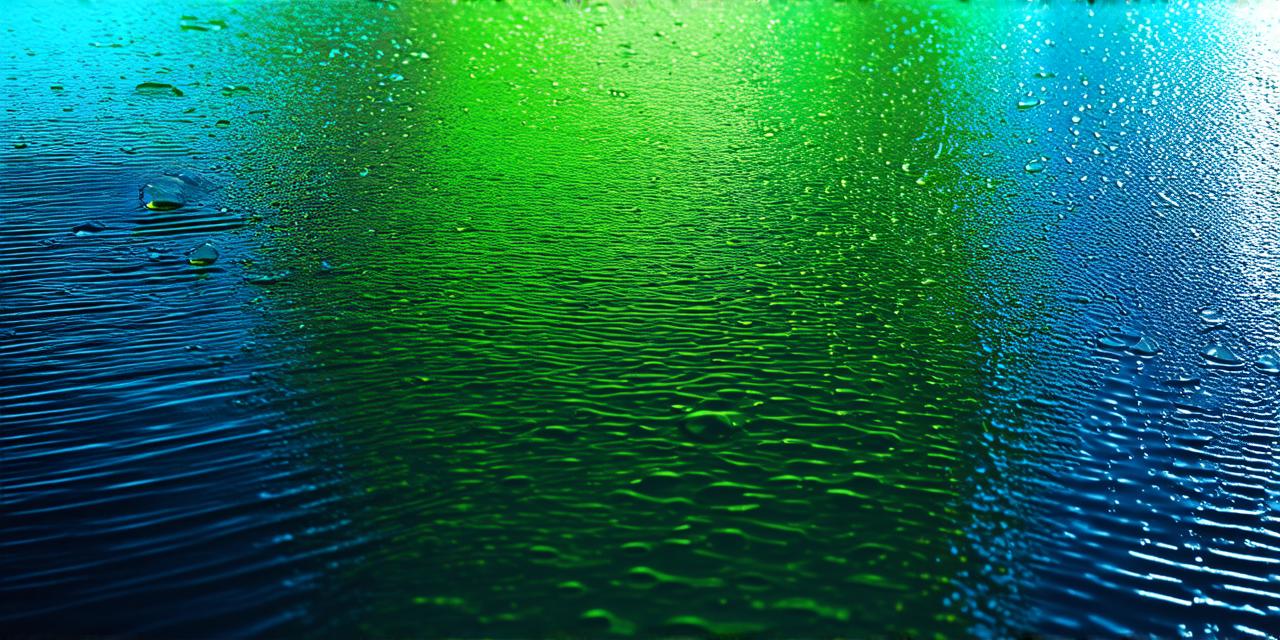
As Unity 3D developers, we know the importance of incorporating water into our projects. Whether it’s creating realistic environments, adding dynamic effects, or simply enhancing the overall aesthetic appeal, water is an essential element that can elevate any project to new heights. In this comprehensive guide, we will explore various techniques and best practices for incorporating water in Unity 3D, as well as how to optimize our workflow to make it as efficient and effective as possible.
The Importance of Water in Unity 3D
Water is a crucial element in many environments, whether it’s a tranquil lake, a roaring river, or a rainy city street. Incorporating water into our projects can add depth and realism to the environment, as well as create dynamic and engaging interactions for players. However, incorporating water in Unity 3D can be a challenging task, especially when it comes to achieving realistic effects and optimizing performance.
One of the main benefits of incorporating water into our projects is the ability to create dynamic and interactive environments. For example, we can create flowing rivers that players must navigate, or lakes with hidden secrets and treasures waiting to be discovered. Water can also be used to create unique visual effects, such as reflections and splashes that add depth to the environment and make it more engaging for players.
In addition to creating dynamic environments, water can also enhance the overall aesthetic appeal of our projects. By incorporating water into our scenes, we can create a sense of atmosphere and ambiance that draws players in and immerses them in the world. For example, we can use water to create a serene and peaceful lake or a rushing river that creates a sense of urgency and excitement.
Optimizing Our Workflow for Water Incorporation
Incorporating water into our projects can be a time-consuming and resource-intensive process, especially when it comes to achieving realistic effects. To optimize our workflow and make the most of our resources, there are several best practices we can follow:
- Use Pre-made Assets: Unity has a wide range of pre-made assets that we can use to incorporate water into our projects. These assets include various water textures, splash effects, and water shaders that we can customize to fit our specific needs.
- Use HDRI Maps: High-Dynamic Range Image (HDRI) maps are a great way to add depth and realism to our water environments. These maps contain detailed information about the lighting in the scene, which can be used to create accurate reflections and splashes.
- Use LOD: Level of Detail (LOD) is a technique that allows us to optimize our water assets for different levels of detail. By using LOD, we can reduce the number of polygons and textures used in our water assets, which can improve performance and reduce resource usage.
- Use Dynamic Lighting: Dynamic lighting is a powerful tool that can be used to create realistic and dynamic effects in our water environments. By using dynamic lighting, we can create reflections and splashes that respond to changes in the environment, such as the sun’s position or weather conditions.
- Optimize Performance: When incorporating water into our projects, it’s important to optimize performance to ensure a smooth and seamless experience for players. This includes using efficient textures and shaders, reducing the number of particles used in splash effects, and minimizing the use of complex lighting and post-processing effects.
Case Studies: Real-Life Examples of Water Incorporation in Unity 3D
There are many great examples of water incorporation in Unity 3D projects, both large and small. Here are a few real-life examples that illustrate the power of water in Unity 3D:
- The Last of Us Part II: In this critically acclaimed game, water is used to create a sense of atmosphere and ambiance in several key scenes. For example, the game’s opening sequence features a flooded cityscape that sets the tone for the rest of the game. By using realistic water effects and dynamic lighting, the developers were able to create a visually stunning and immersive environment that captivated players from the very beginning.
- Assassin’s Creed Valhalla: In this action-adventure game, water is used to create dynamic and interactive environments that are both beautiful and challenging for players to navigate. For example, the game features several large rivers that players must cross using various means of transportation. By using realistic water effects and dynamic lighting, the developers were able to create a visually stunning and engaging environment that added depth and realism to the game world.
- The Witcher 3: Wild Hunt: In this open-world RPG, water is used to create a sense of atmosphere and ambiance in several key locations. For example, the game’s swampy regions feature murky waters that hide hidden secrets and treasures waiting to be discovered. By using realistic water effects and dynamic lighting, the developers were able to create a visually stunning and immersive environment that added depth and realism to the game world.

Best Practices for Water Incorporation in Unity 3D
In addition to optimizing our workflow and using pre-made assets, there are several best practices we can follow when incorporating water into our projects:
- Use Realistic Textures: When it comes to water, it’s important to use realistic textures that accurately represent the surface of the water. This includes using detailed normal maps, specular maps, and reflection maps that simulate the way light interacts with the water surface.
- Use Dynamic Lighting: As we mentioned earlier, dynamic lighting is a powerful tool for creating realistic and dynamic effects in our water environments. By using dynamic lighting, we can create reflections and splashes that respond to changes in the environment, such as the sun’s position or weather conditions.
- Use Particle Effects: Particle effects are a great way to add dynamic and interactive elements to our water environments. For example, we can use particle effects to simulate waves, sprays, and other water-related effects that add depth and realism to the scene.
- Use Sound Effects: Sound effects are an important component of any environment, and they can be especially effective when it comes to water. By using sound effects such as water splashes, ambient noise, and background music, we can create a more immersive and engaging experience for players.
- Test and Optimize: Finally, it’s important to test our water environments thoroughly and optimize them for performance. This includes testing the scene on different devices and platforms to ensure smooth gameplay, as well as optimizing the textures, shaders, and particle effects used in the scene.
Summary
Incorporating water into Unity 3D projects can be a challenging but rewarding experience. By using pre-made assets, optimizing our workflow, and following best practices for water incorporation, we can create visually stunning and immersive environments that add depth and realism to our games. Whether you’re creating a small indie game or a large-scale AAA title, water is an important element that can greatly enhance the overall experience of your game.

